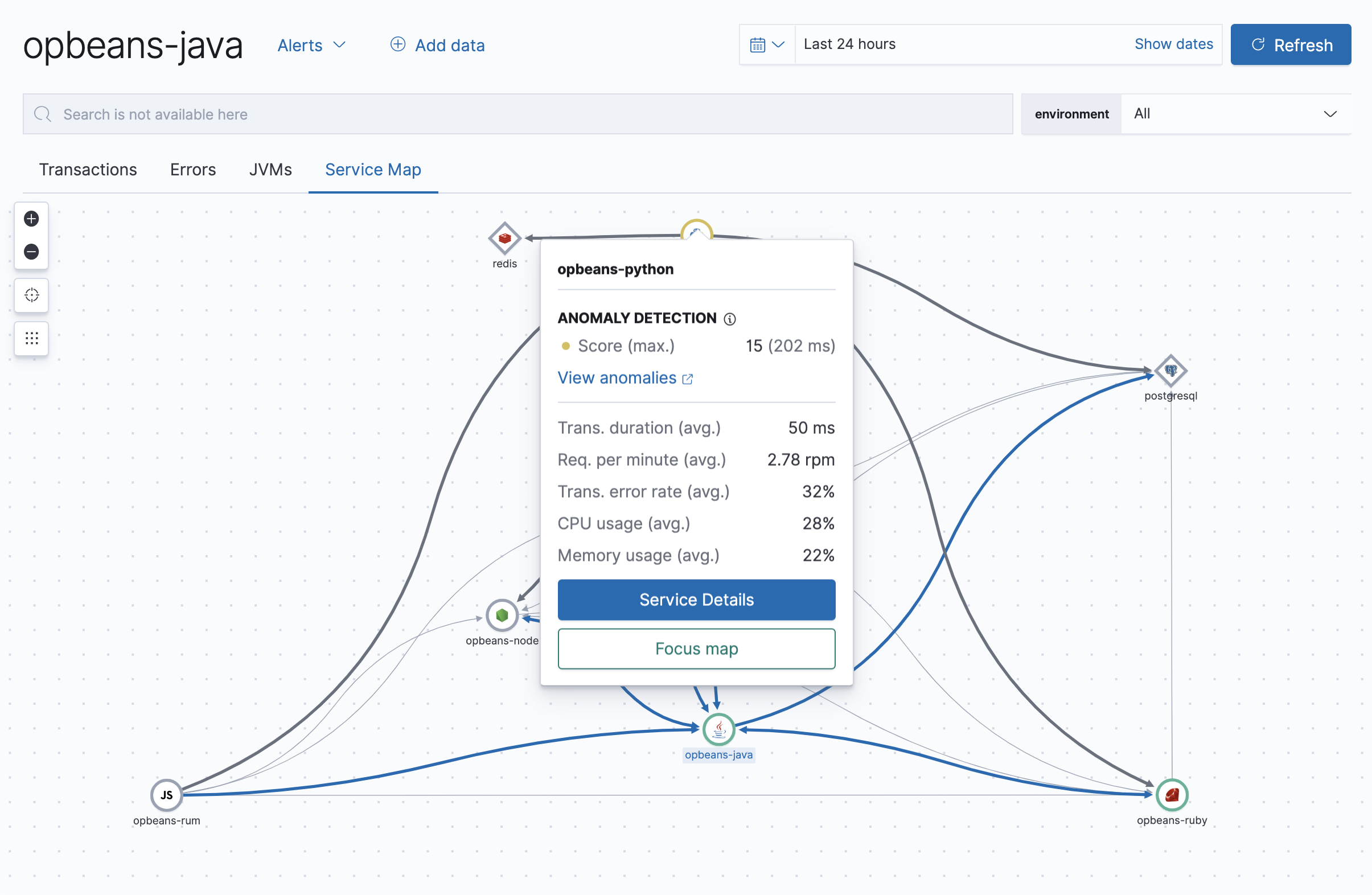- Elastic Cloud Serverless
- Elasticsearch
- Elastic Observability
- Get started
- Observability overview
- Elastic Observability Serverless billing dimensions
- Create an Observability project
- Quickstart: Monitor hosts with Elastic Agent
- Quickstart: Monitor your Kubernetes cluster with Elastic Agent
- Quickstart: Monitor hosts with OpenTelemetry
- Quickstart: Unified Kubernetes Observability with Elastic Distributions of OpenTelemetry (EDOT)
- Quickstart: Collect data with AWS Firehose
- Get started with dashboards
- Applications and services
- Application performance monitoring (APM)
- Get started with traces and APM
- Learn about data types
- Collect application data
- View and analyze data
- Act on data
- Use APM securely
- Reduce storage
- Managed intake service event API
- Troubleshooting
- Synthetic monitoring
- Get started
- Scripting browser monitors
- Configure lightweight monitors
- Manage monitors
- Work with params and secrets
- Analyze monitor data
- Monitor resources on private networks
- Use the CLI
- Configure a Synthetics project
- Multifactor Authentication for browser monitors
- Configure Synthetics settings
- Grant users access to secured resources
- Manage data retention
- Scale and architect a deployment
- Synthetics Encryption and Security
- Troubleshooting
- Application performance monitoring (APM)
- Infrastructure and hosts
- Logs
- Inventory
- Incident management
- Data set quality
- Observability AI Assistant
- Machine learning
- Reference
- Get started
- Elastic Security
- Elastic Security overview
- Security billing dimensions
- Create a Security project
- Elastic Security requirements
- Elastic Security UI
- AI for Security
- Ingest data
- Configure endpoint protection with Elastic Defend
- Manage Elastic Defend
- Endpoints
- Policies
- Trusted applications
- Event filters
- Host isolation exceptions
- Blocklist
- Optimize Elastic Defend
- Event capture and Elastic Defend
- Endpoint protection rules
- Identify antivirus software on your hosts
- Allowlist Elastic Endpoint in third-party antivirus apps
- Elastic Endpoint self-protection features
- Elastic Endpoint command reference
- Endpoint response actions
- Cloud Security
- Explore your data
- Dashboards
- Detection engine overview
- Rules
- Alerts
- Advanced Entity Analytics
- Investigation tools
- Asset management
- Manage settings
- Troubleshooting
- Manage your project
- Changelog
Integrate with machine learning
editIntegrate with machine learning
editThe Machine learning integration initiates a new job predefined to calculate anomaly scores on APM transaction durations. With this integration, you can quickly pinpoint anomalous transactions and see the health of any upstream and downstream services.
Machine learning jobs are created per environment and are based on a service’s average response time. Because jobs are created at the environment level, you can add new services to your existing environments without the need for additional machine learning jobs.
Results from machine learning jobs are shown in multiple places throughout the Applications UI:
- The Services overview provides a quick-glance view of the general health of all of your services.
- The transaction duration chart will show the expected bounds and add an annotation when the anomaly score is 75 or above.
-
Service Maps will display a color-coded anomaly indicator based on the detected anomaly score.

Enable anomaly detection
editTo enable machine learning anomaly detection:
- In your Elastic Observability Serverless project, go to any Applications page.
- Click Anomaly detection.
- Click Create Job.
- Machine learning jobs are created at the environment level. Select all of the service environments that you want to enable anomaly detection in. Anomalies will surface for all services and transaction types within the selected environments.
- Click Create Jobs.
That’s it! After a few minutes, the job will begin calculating results; it might take additional time for results to appear on your service maps. To manage existing jobs, click Manage jobs (or go to Machine learning → Jobs).
Anomaly detection warning
editTo make machine learning as easy as possible to set up, Elastic will warn you when filtered to an environment without a machine learning job.
Unknown service health
editAfter enabling anomaly detection, service health may display as "Unknown". Here are some reasons why this can occur:
- No machine learning job exists. See Enable anomaly detection to enable anomaly detection and create a machine learning job.
- There is no machine learning data for the job. If you just created the machine learning job you’ll need to wait a few minutes for data to be available. Alternatively, if the service or its environment are new, you’ll need to wait for more trace data.
- No "request" or "page-load" transaction type exists for this service; service health is only available for these transaction types.